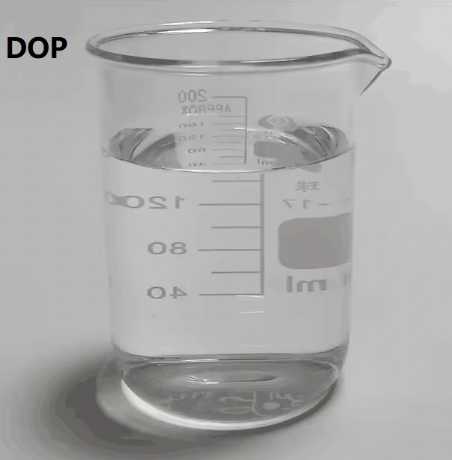What Are Plasticizers? Basic Functions Explained
Defining Plasticizers and Their Core Purpose
Plasticizers are vital ingredients that are added to increase the plasticity or fluidity of the material, especially PVC and other polymers. Plasticizers are some sort of plastic additive that acts to decrease the intermolecular forces through interposing themselves between polymer chains, rendering the material more flexible and easier to handle. This flexibility is important as plasticisers can reduce the processing temperature of plastics by as much as 30%, and feedstock resin suppliers require that processing temperatures are closely monitored. This decreased temperature is not only more efficient to produce, it also saves energy (and the planet) during production.
How Plasticizers Improve Flexibility in Materials
With their declining glass transition temperature (Tg) contribution to flexibility, plasticizers strongly influence the mechanical properties of polymers. This modifier is particularly useful for packaging and toys and automotive products which may require flexible materials. Studies have shown that certain plasticizers when added can cause an increase in the elongation at break by 20-50%, here and there, adding substantially to the strength and usefulness of the materials. This mechanical flexibility demonstrates the significance of plasticizers in just how well products can meet the required functionality and safety requirements.
The Role of Plasticizers in Processability
In the polymer processing industry, plasticisers play a key role in making the plastics more moldable, to ease the process of extrusion or overall shaping. SIGNIFICANTLY DECREASING VISCOSITY plasticizers enable manufacturers to produce the shape they want with optimum accuracy and consistency, resulting in improved processing. From the existing information, it can be concluded that the utilization of efficient plasticizers in some industries may save up to 15% of the processing cost. Such cost-efficient factors, together with better material processing and product quality demonstrate the irreplaceable role of plasticizers in contemporary industrial uses.
Common Plasticizer Types for Beginners
DOTP: A Beginner-Friendly Phthalate Alternative
DIOCTYL TEREPHTHALATE, (DOTP) is an organic compound with the formula C6H4(CO2C8H17)2. It performs much like phthalates but has the added advantage of being slightly less toxic, making it an attractive choice for consumer products wary of potential health consequences. One important feature of DOTP is its strong regulatory compliance, making it appropriate for many uses without the environmental or health concerns of phthalate esters. Study indicates that DOTP still exhibits properties similar to those of a typical one, it can be considered for, as an alternative material, for comber applications.
DINP: Low Volatility for Versatile Applications
DINP,Diisononyl Phthalate,Low-volatility and weak odour,applicable to building materials and auto parts industry. And its full temperature spectrum applicability means it stays effective long enough to resist quick evaporation or downgrading. As an added bonus, DINP is known to increase product life, with its presence able to drastically increase durability and weatherability. The use of DINP in certain industries such as plastics, add a higher resistance to wear and bending while remaining high flexibility and more transparencies. It is this low volatility characteristic that sets DINP apart in markets looking for flexible options.
DOA and Citrates: Safer Options for Sensitive Uses
DOA (Dioctyl Adipate) and citrate esters are commonly associated with safety especially those with sensitive applications such as children or specific types of consumables. Their bio-based nature adheres to the increasing demand on sustainability and non-toxicity. In addition, they differ from other plasticizers that of having an excellent flexibility and of having a low migration rate, which fits to applications with the high end use level. While we are all right on course toward green alternatives DOA and citrate esters appear as eco-sustainable options in line with regulatory requirements and consumers' safety.
Key Selection Criteria for New Users
Prioritizing Low Volatility for Longevity
Whether you are choosing plasticizers for their solvating strength, low viscosity or low temperature flexibility, low volatility and long life are key to success and add up to economic advantage over time. Low volatility plasticizer has a low tendency to evaporate, particularly when used in high temperature applications. Actually, the low volatility options are preferred since they can maintain the material performance for a long period, even several years. It results in considerable savings by preventing frequent replacement or repair.
Ensuring Compatibility with Base Polymers
Compatible of plasticizers and base polymers is extremely important in avoiding problems such as phase separation or deterioration. Compatibility is crucial because it governs the mechanical behaviour and the performance of the resulting artefact. Mis-matched combinations can significantly reduce product strength –claims of up to 30% reduction have been reported. Hence compatibility should also be one of the determinants while selecting blades, to maintain a high level of product performance and longevity.

Balancing Cost and Performance
Cost and performance must be carefully weighed when new users are choosing plasticizers so they don’t sacrifice quality in return for cost savings. Sensitivities to cost can drive less expensive material selections, however ignoring the long term considerations may lead to higher costs later down the road. A review of industry analysis found that companies investing in the best available plasticisers can experience less failure and higher customer satisfaction.
Safety and Environmental Compliance
Understanding Health Impact Concerns
Health consequences of plasticizers are also considerable, especially in terms of endocrine disruption and toxicity. Plasticizers are a major focus of medical and environmental research because of the health risks they pose, such as cancer and reproductive damage. The expanding knowledge base promotes progressive safety practices in product development, leading to an evolving industry.
Navigating EU REACH and EPA Regulations
The EU REACH and U.S. EPA legislations guarantee that plasticizers are subject to the most extensive scrutiny by the authorities. Enforcement means the manufacturer must submit detailed data on risks and address them before the product goes to market. Not doing so can result in large fines and costly operational interruptions, so regulatory compliance is a key consideration in a production strategy.
Eco-Friendly Alternatives for Beginners
In response to increasing demand for sustainable materials, green plasticizers like bio-based alternatives are gaining traction. These not only address health concerns but also support environmental sustainability. Recent studies suggest that adopting eco-friendly plasticizers can significantly minimize environmental impacts, reducing them by up to 50% in specific applications.
Future Trends in Plasticizer Technology
Bio-Based Plasticizers for Sustainable Solutions
This trend towards bio-based plasticizers is a growing trend as markets look for environmentally friendly options that do not compromise performance. These plasticizers are also based on renewable raw materials, thereby minimizing dependence on fossil resources. The industry is seeing new developments proving that bio-based plasticizers, where suitable, can even outperform conventional options which makes bio-based plasticizers an attractive and promising alternative. Increasing awareness towards environment is leading to demand for sustainable products, fueling demand for bio-based plasticizers in various end-use industries.
High-Performance Non-Phthalate Innovations
High performance non-phthalate plasticizes: Major progress has been made in the past years in high performance non-phthalate plasticizers. These substitutes are designed to mimic the performance of conventional plasticizers without their known harmful effects, a feature that has helped them gain a stronger foothold in safety-critical industries such as automotive and medical devices. The latest statistics show that non-phthalate products have seen a 25% rise in adoption rates over the last five years, demonstrating a definitive change in the industry’s direction on safe plasticization alternatives.
Smart Plasticizers for Adaptive Applications
Molecularly smart plasticizers are at the forefront of this exciting new age of material science. These smart plasticisers help materials adapt to environmental conditions and increase the flexibility of plastics to fit the requirements of use specific performance levels. They are malleable to change as needed, and that can give a company an edge in sectors that prize efficiency and nimbleness. It has now been found that this problem may be satisfactorily solved so that a smart plasticizer will be capable of advantages in enhancing performance, extending its application fields, and even innovating its functions and attributes as it relates to the plasticization of material, the smart plasticizer being capable of enjoying superior efficiency in such plasticization.
FAQ
What are plasticizers and why are they important?
Plasticizers are additives that increase the flexibility and fluidity of materials, especially polymers like PVC, enhancing their usability in various applications.
How do plasticizers impact the glass transition temperature of materials?
Plasticizers lower the glass transition temperature (Tg) of polymers, making them more flexible and durable for diverse uses.
Which plasticizers offer low toxicity and environmental benefits?
DOTP and bio-based alternatives are popular for their low toxicity and environmental benefits, making them suitable for consumer products focused on health and sustainability.
What is the significance of ensuring compatibility between plasticizers and base polymers?
Ensuring compatibility is crucial to prevent issues such as phase separation and degradation, ensuring optimal product performance and durability.
Are there regulations governing the use of plasticizers?
Yes, regulations like the EU REACH and U.S. EPA govern plasticizer usage, requiring safety assessments and compliance to avoid penalties.
Table of Contents
- What Are Plasticizers? Basic Functions Explained
- Common Plasticizer Types for Beginners
- Key Selection Criteria for New Users
- Safety and Environmental Compliance
- Future Trends in Plasticizer Technology
-
FAQ
- What are plasticizers and why are they important?
- How do plasticizers impact the glass transition temperature of materials?
- Which plasticizers offer low toxicity and environmental benefits?
- What is the significance of ensuring compatibility between plasticizers and base polymers?
- Are there regulations governing the use of plasticizers?

